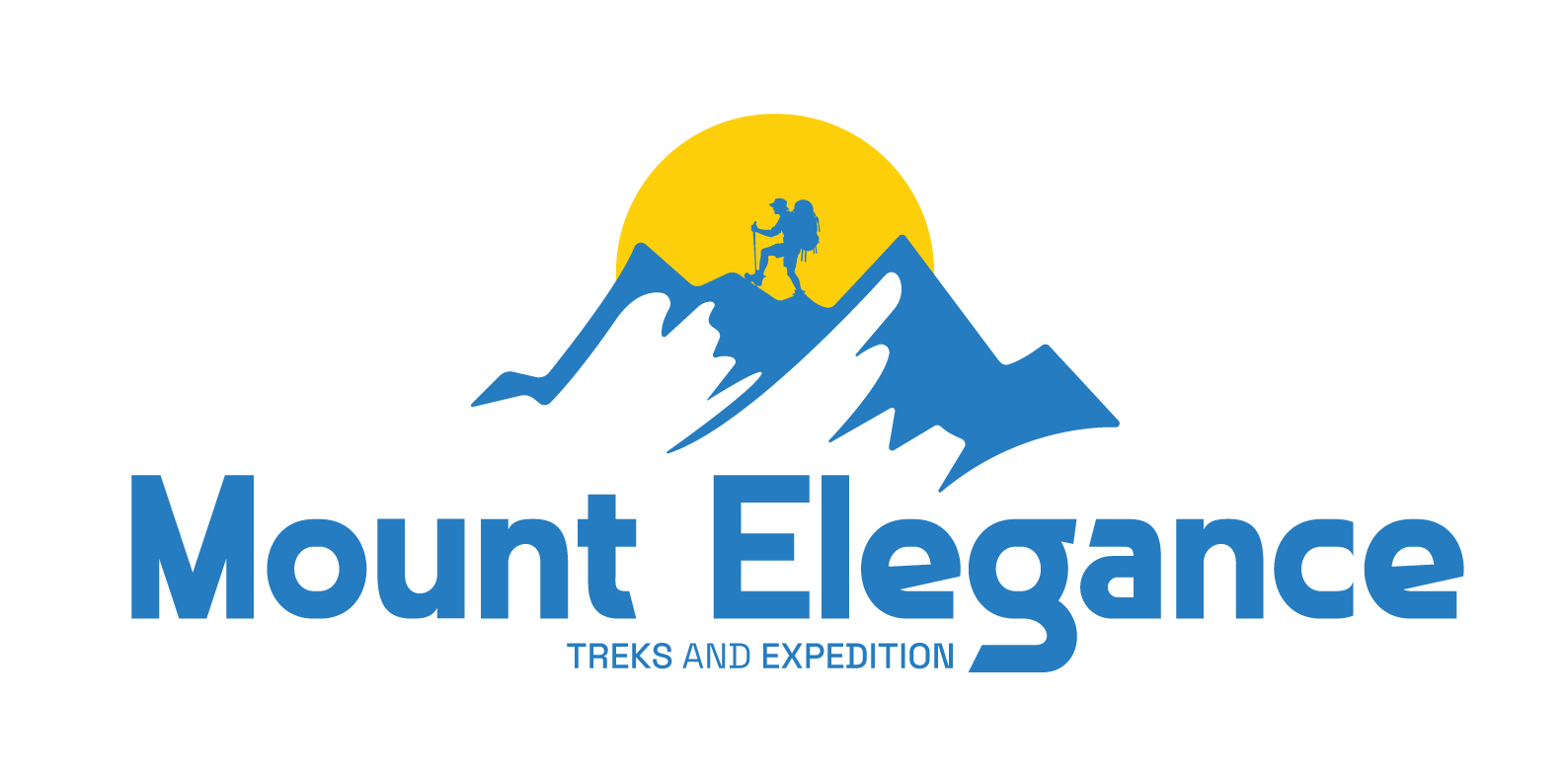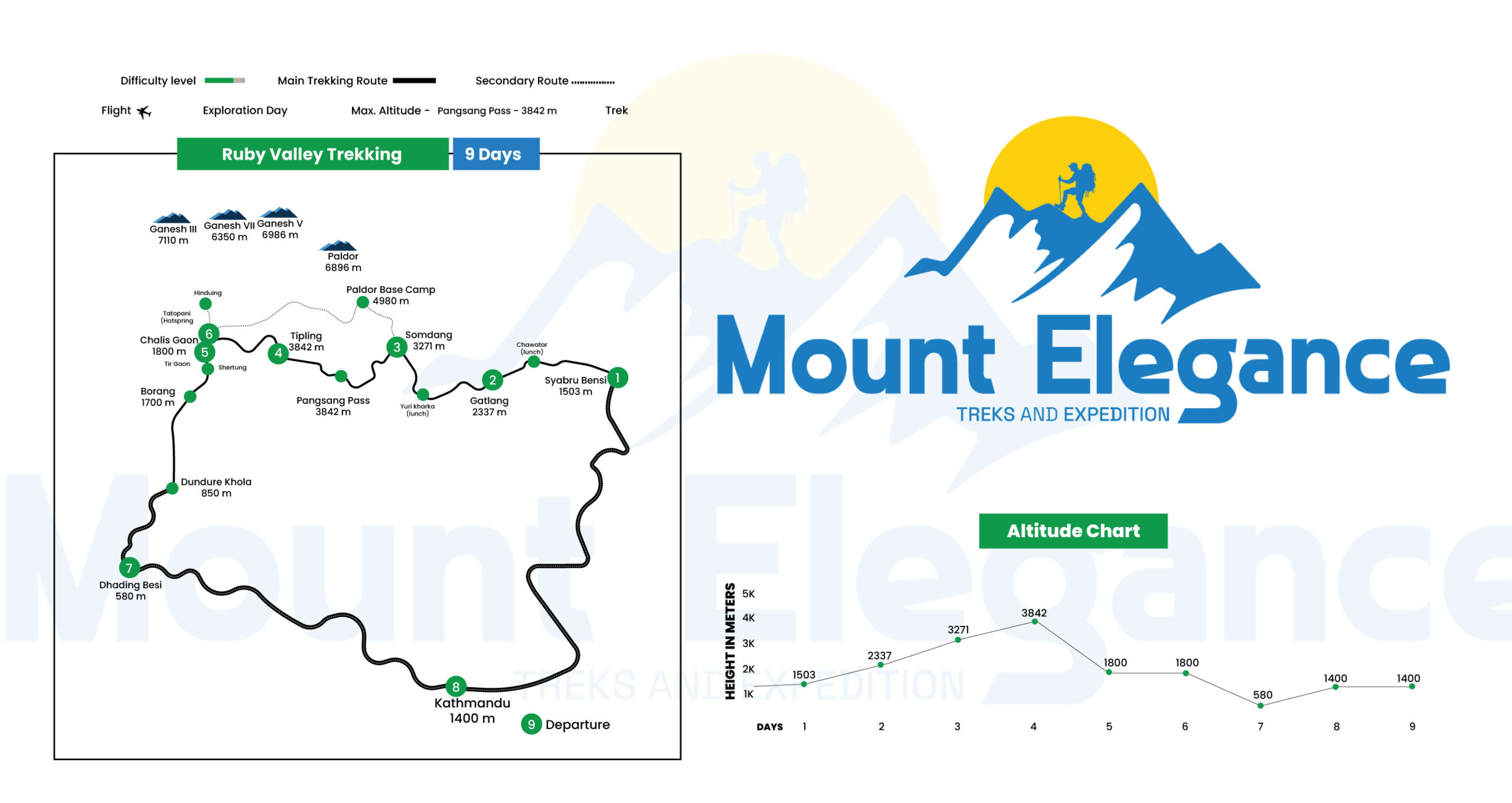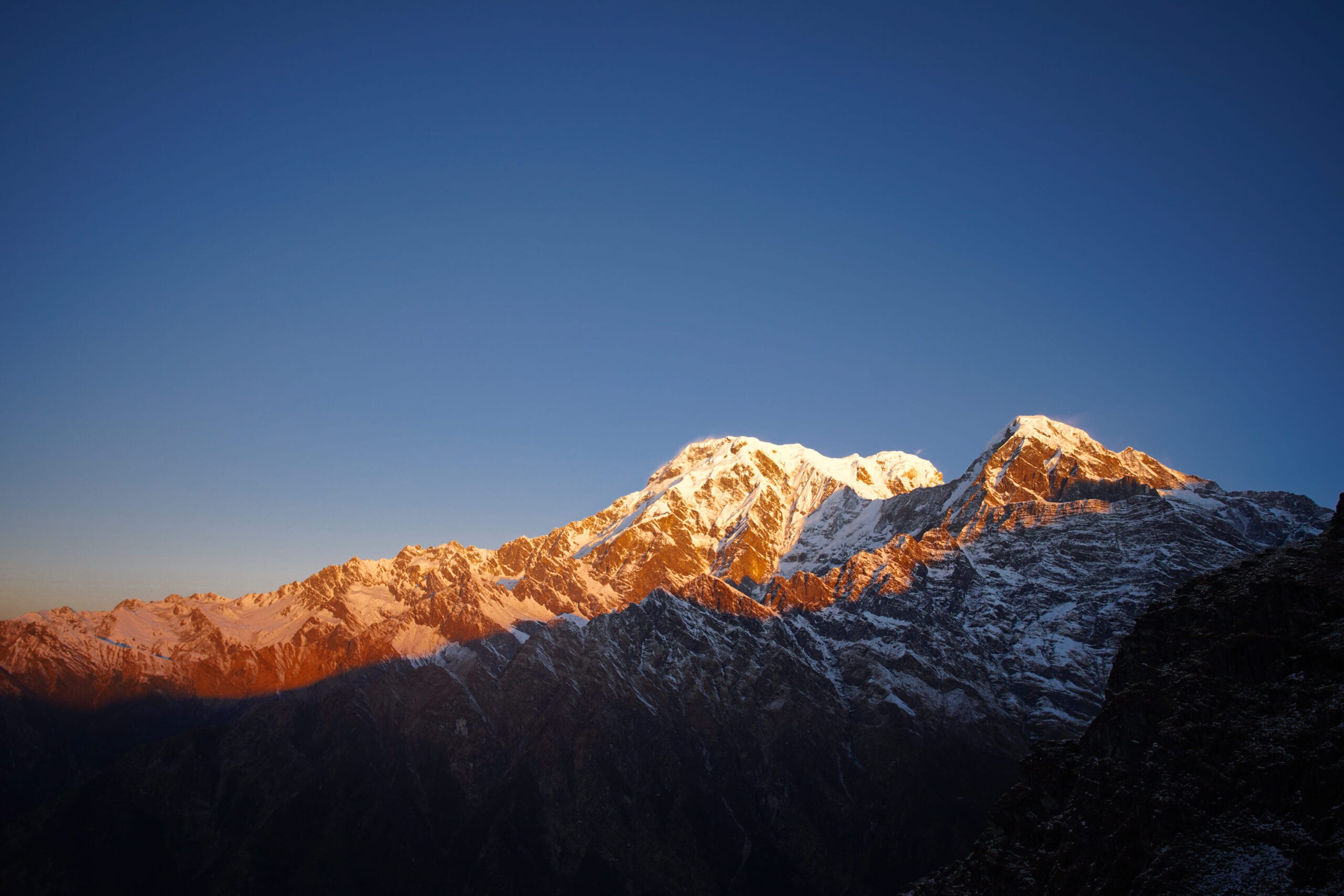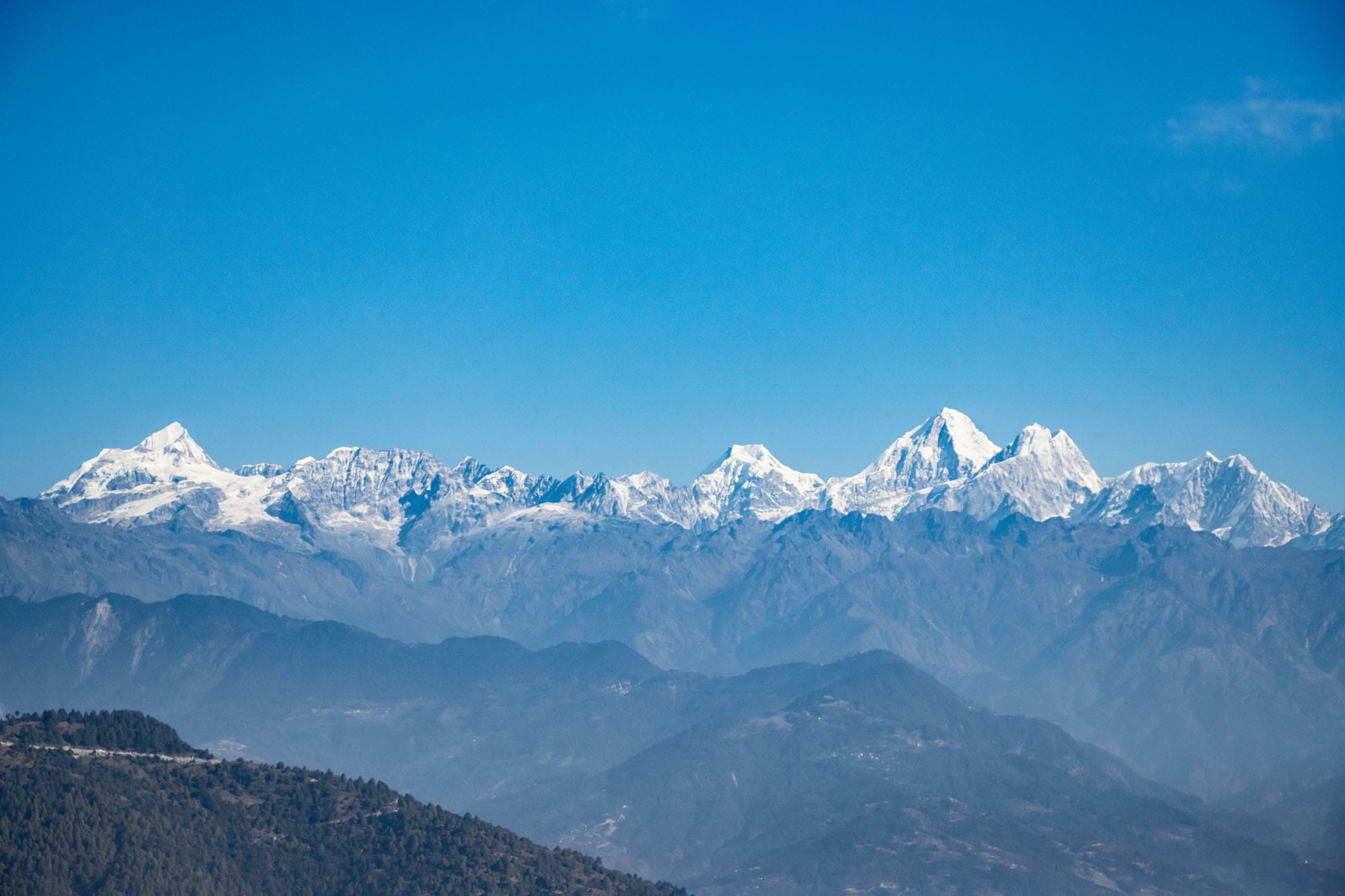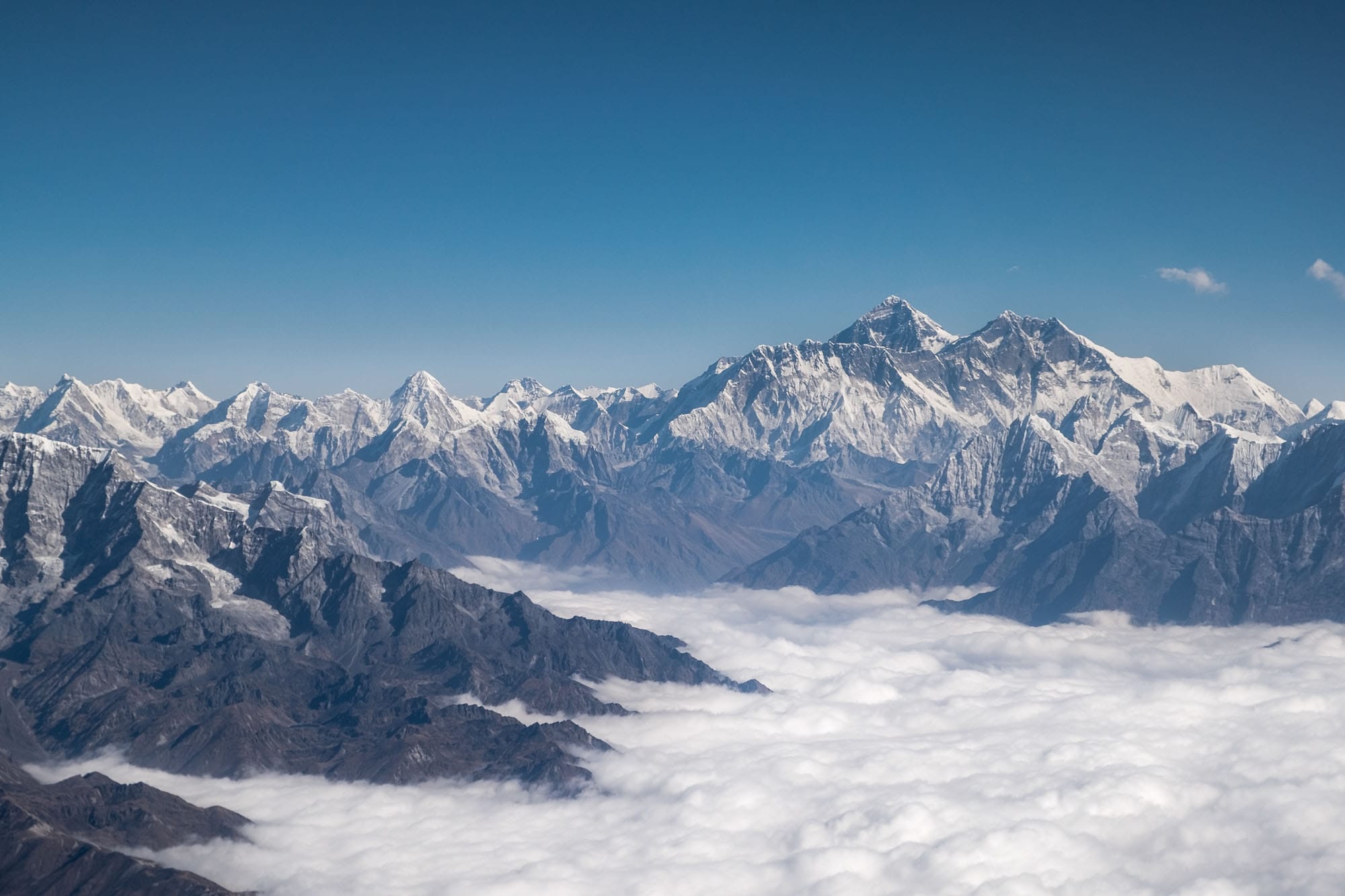Ruby Valley Trek – 9D
Highest Altitude
Trip Overview
Ruby Valley Trek – 9 days is a hidden gem that offers trekkers an off-the-beaten-path experience in central Nepal. Unlike the busier trails of Annapurna or Everest, this trek takes you through unspoiled valleys, terraced farmlands, and pristine alpine forests, providing a truly authentic adventure.
As you begin your journey, you will pass through traditional Tamang, Gurung, and Dalit villages, where the warm hospitality of the locals and their time-honored customs create deep cultural immersion. Moreover, the trek unfolds through diverse terrains—from cascading waterfalls and glacial rivers to rhododendron groves and panoramic ridges. What makes this route even more special is its balance of natural beauty and cultural diversity. While trekking along peaceful trails, you’ll be rewarded with breathtaking views of Ganesh Himal, Langtang Lirung, Manaslu, and even distant glimpses of Annapurna peaks. In addition, you’ll have opportunities to visit sacred sites like Kalo Seto Kunda (Black and White Lakes), hidden caves, and local monasteries untouched by mass tourism.
Ideal for those seeking solitude and authenticity, the Ruby Valley Trek is perfect in spring and autumn when wildflowers bloom and the skies remain crystal clear. Whether you are a nature lover, culture seeker, or simply an adventurer looking for something unique, this trail promises an unforgettable experience in the heart of Nepal.
Trip Highlights of Ruby Valley Trek – 9 days
- Trek through culturally diverse Tamang, Gurung, and Magar villages with warm hospitality.
- Enjoy panoramic views of Ganesh Himal, Langtang, Manaslu, and Paldor Peak.
- Walk along peaceful trails lined with rhododendron forests, waterfalls, and terraced fields.
- Cross high ridges like Pangsang Pass (3,842 m) with breathtaking Himalayan scenery.
- Discover natural hot springs, hidden caves, and sacred lakes off the beaten path.
- Experience genuine community-based homestays promoting local tourism and culture.
- Witness a rich blend of Hindu and Buddhist traditions in remote mountain settlements.
Essential Items:
- Base Layers: Thermal top and bottom
- Insulation: Fleece jacket and down jacket
- Outer Layer: Waterproof jacket and pants
- Trekking Clothes: Some pairs of trekking pants, quick-dry shirts
- Footwear: Trekking boots, camp shoes/sandals
- Headwear: Sun hat, warm hat, neck gaiter
- Hand-wear: Lightweight gloves, insulated gloves
- Accessories: Sunglasses, sunscreen, lip balm , headlamp with extra batteries , trekking poles ,50-60L backpack + daypack
- Personal Items: Hygiene essentials (toothbrush, toothpaste, wet wipes), Quick-dry towel ,Water bottle or hydration system (2L capacity), Snacks (energy bars, nuts)
- Medical Kit: Personal medications, basic first aid, altitude sickness pills
- Documents: Passport, trekking permits, travel insurance
- Optional: Camera, power bank, Lightweight sleeping bag
Refer to this for the full Equipment Checklist
Itinerary
Drive Duration: 6-7 hours
Meals: B/L/D
Highest Altitude: 1,460 m / 4,790 ft
The journey begins with a long but scenic drive from Kathmandu to Syabrubesi, the traditional gateway to both Langtang and Ruby Valley treks. As you leave the capital, the road winds through forested hills, riverside towns, and terraced farmland, giving you the first taste of rural Nepal.
Syabrubesi sits along the banks of the Bhote Koshi River and offers modest guesthouses for trekkers to rest before starting the trail. The climate is mild, the people are friendly, and the village ambiance feels calm, making it an ideal starting point for your trek.
Trek Duration: 5 to 6 hours
Meals: B/L/D
Highest Altitude: 2,238 m / 7,342 ft
Your trek begins with an ascent through forest trails and traditional Tamang villages. Along the way, you’ll pass local chortens, mani walls, and viewpoints that offer glimpses of Ganesh Himal and Langtang ranges.
Gatlang is a culturally rich village known for its wooden houses and stone-paved lanes. The Tamang community here practices Tibetan Buddhism and welcomes trekkers with ceremonial dances and organic meals, often accompanied by homemade raksi (local millet wine).
Trek Duration: 6–7 hours
Meals: B/L/D
Highest Altitude: 3,270 m / 10,728 ft
Today’s trail leads you through alpine forests of pine and rhododendron, with increasing views of snow-clad peaks. You’ll walk through areas historically used for zinc and ruby mining, adding a unique historical layer to the natural beauty.
Somdang is a remote and peaceful settlement, surrounded by mountains and forests. The air becomes crisper, the terrain more rugged, and wildlife sightings like Himalayan monals or musk deer become more frequent.
Trek Duration: 7–8 hours
Meals: B/L/D
Highest Altitude: 3,842 m / 12,605 ft
This is the most demanding day of the trek as you cross the panoramic Pangsang La Pass. The views from the top are breathtaking—Ganesh Himal, Langtang Lirung, Manaslu, and even distant Annapurna ranges stretch across the skyline.
After soaking in the mountain vistas, you descend to Tipling, a large village with both Buddhist and Christian communities. The cultural and religious diversity here is fascinating, offering insights into harmonious rural coexistence.
Trek Duration: 4–5 hours
Meals: B/L/D
Highest Altitude: 1,875 m / 6,150 ft
Today’s descent brings you through lush forests, cascading waterfalls, and small farms. The trail is scenic and gives trekkers a closer look at local agriculture and rural livelihoods.
Chalish Gaon is known for its warm hospitality and vibrant community life. You’ll likely stay in a community-run homestay, experiencing local food, music, and a sense of connectedness that is rare on more commercial trekking routes.
Trek Duration: N/A
Meals: B/L/D
Highest Altitude: 2,600 m / 8,530 ft (Tatopani)
You can take this day to rest in Chalish or take a short hike to the natural hot springs at Tatopani. The springs are a rejuvenating treat, especially after the high-altitude days.
Surrounded by forest and a gentle river, Tatopani is a tranquil site where locals and trekkers alike soak in warm mineral water believed to have healing properties. It’s an ideal day to relax, recover, and interact with locals.
Trek Duration: 2–3 hours
Meals: B/L/D
Highest Altitude: 1,700 m / 5,577 ft
You’ll descend further to Borang, a quiet village with traditional mud-brick homes and friendly residents. The trail is filled with greenery, and you’ll pass several small suspension bridges and stream crossings.
From Borang, a vehicle takes you back to Dhading Besi, reconnecting you to paved roads and the start of your return to city life. This marks the end of the trekking trail portion of your journey.
Drive Duration: 6-7 hours
Meals: B/L/D
Highest Altitude: 1,400 m / 4,593 ft
The drive from Dhading Besi to Kathmandu retraces scenic highways and riverside routes. After days of trekking through untouched valleys and mountain paths, the return to the capital is both restful and reflective.
Back in Kathmandu, you’ll have time to relax, enjoy a hot shower, and perhaps explore Thamel. A farewell dinner with traditional Nepali cuisine is a great way to celebrate the successful completion of your trek which is hosted by mount elegance team. It’s a perfect way to end this rewarding off-the-beaten-path experience.
Trek Duration: N/A
Meals: B
Highest Altitude: 1,400 m / 4,593 ft
Today marks the end of your Ruby Valley adventure. Depending on your flight time, you can explore the local markets or relax at your hotel before transferring to the airport.
You leave Nepal with unforgettable memories of serene trails, vibrant communities, and spectacular mountain views. The Ruby Valley Trek offers not only natural beauty but also a genuine cultural experience you’ll carry for life.
Book Now
Send an Inquiry
Got A Question?

Mr. Shishir Dhakal
Price Inclusion
- Airport transfers in Kathmandu.
- Drive from Kathmandu - Syabrubesi. After the trek, Dhading besi - Kathmandu by bus/jeep.
- Accommodation in Kathmandu (3-star hotel) including breakfast after trek.
- Accommodation in teahouses during the trek.
- All meals (breakfast, lunch, and dinner) during the trek.
- Experienced English-speaking trekking guide.
- All government, Local taxes/ vat and official Expenses
- Seasonal fresh fruit as dessert every evening after dinner.
- Mount Elegance free Tshirt and Route map.
- Complimentary first aid box (Guide will carry during trekking).
- Oximeter to measure the Oxygen (For awareness of the high altitude sickness).
- Comprehensive travel insurance.
- Duffel bag and sleeping bag for trekking (Should be returned after trek completion).
- One porter for two trekkers.
- Farewell dinner at the end of the trek.
Price Exclusion
- International airfare to and from Kathmandu.
- Nepal entry visa fees.
- Accommodation in Kathmandu before trek.
- Personal trekking equipment and gear.
- Tips for guides and porters.
- Extra expenses such as bar bills, laundry, and telephone charges.
- Travel insurance for personal loss, injury, or illness.
Additional Information
Trip Map
Meals and Accommodation
The Ruby Valley Trek offers an iconic trekking experience filled with breathtaking landscapes and cultural immersion. Accommodation and meal arrangements along the route are designed to provide comfort and sustenance throughout this journey.
Accommodations in Kathmandu and on the Trek
In Kathmandu, you’ll stay in a standard hotel equipped with modern amenities and complimentary WiFi to help you unwind and prepare for the trek.
Along the trail, you’ll stay in teahouses that provide cozy rooms with basic amenities, typically in shared or twin-sharing setups. Most teahouses feature communal dining areas where you can enjoy meals and connect with other trekkers. Facilities like hot showers, charging outlets, and WiFi are available at many lodges along the route, but extra charges may apply.
Meals on the Trek
Full-board meals, including breakfast, lunch, and dinner, are provided during the trek. The meals typically consist of a variety of healty options with Nepali, Tibetan, and international influences, such as dal bhat, noodles, and soups. Breakfast is included in Kathmandu, while you’ll have access to a range of local and international dining options in the city for other meals.
Best Season for Ruby Valley Trek
Spring (March to May)
- Weather: Mild temperatures, blooming rhododendrons, and clear skies.
- Temperature:
- Lower elevations (2,860m to 3,500m): 10°C to 20°C during the day, 0°C to 5°C at night.
- Higher elevations (up to 5,644m): -5°C to 10°C during the day, -15°C to -5°C at night.
- Highlights: Vibrant landscapes and moderate temperatures make this an excellent time to trek to Everest Base Camp and climb Kala Patthar.
Autumn (September to November)
- Weather: Stable, clear skies and comfortable temperatures.
- Temperature:
- Lower elevations (2,860m to 3,500m): 10°C to 20°C during the day, 0°C to 5°C at night.
- Higher elevations (up to 5,644m): -5°C to 10°C during the day, -15°C to -5°C at night.
- Highlights: Post-monsoon clarity offers spectacular views, making it a popular season for panoramic vistas of Everest.
Winter (December to February)
- Weather: Cold, with potential snow in higher areas.
- Temperature:
- Lower elevations (2,860m to 3,500m): 0°C to 10°C during the day, -5°C to 0°C at night.
- Higher elevations (up to 5,644m): -10°C to -5°C during the day, -20°C to -10°C at night.
- Challenges: Fewer trekkers, quieter trails, but colder conditions, with snow potentially making some areas more difficult to access.
Monsoon/Summer (June to August)
- Weather: Warm and humid at lower altitudes, with frequent rain.
- Temperature:
- Lower elevations (2,860m to 3,500m): 15°C to 25°C during the day, 5°C to 10°C at night.
- Higher elevations (up to 5,644m): -5°C to 10°C during the day, -10°C to -5°C at night.
- Challenges: Rain and fog can limit views, but lush landscapes and quieter trails provide a unique trekking experience.
Equipment Checklist
Trekking in Nepal is an incredible adventure, taking you through diverse landscapes, from lush forests to rugged mountain trails. To fully enjoy the experience, it’s crucial to pack the right equipment. Here’s an essential checklist to help you prepare for your trek, ensuring you’re ready for the challenges and beauty of the Himalayas.
1. Clothing
- Base Layers: Moisture-wicking base layers (thermal tops and bottoms) are essential for regulating your body temperature. Opt for lightweight, breathable materials.
- Mid Layers: Fleece jackets or lightweight down jackets provide warmth in colder temperatures. These layers should be easy to add or remove as needed.
- Outer Layers: A waterproof and windproof jacket is essential to protect against rain, wind, and snow. Make sure it’s breathable to stay comfortable during strenuous activities.
- Trekking Pants: Lightweight, quick-drying pants are ideal. Consider packing thermal pants for colder regions or seasons.
- Gloves, Hats, and Buffs: Warm gloves, a woolen hat, and a buff or neck gaiter help protect against the cold at high altitudes.
- Trekking Socks: High-quality, moisture-wicking socks (at least three pairs) are crucial to prevent blisters and keep your feet dry.
2. Footwear
- Trekking Boots: Sturdy, well-fitted, and waterproof trekking boots with good ankle support are essential. Break them in before your trek to avoid blisters.
- Sandals or Camp Shoes: Lightweight sandals or camp shoes for relaxing at tea houses or lodges after a long day of trekking.
3. Backpack and Storage
- Daypack (20-30 liters): A small, comfortable daypack with rain cover to carry essentials like water, snacks, camera, and extra layers.
- Duffel Bag (60-80 liters): For your main gear, use a durable, waterproof duffel bag that will be carried by porters.
- Dry Bags or Ziplock Bags: For protecting electronics, documents, and clothes from moisture.
4. Trekking Gear
- Trekking Poles: Adjustable trekking poles reduce the strain on your knees, especially during steep descents.
- Headlamp with Extra Batteries: Essential for early morning starts, late finishes, or use in lodges where electricity may be limited.
- Water Bottles and Purification: Carry reusable water bottles and purification tablets or a water filter to ensure safe drinking water.
- Sleeping Bag: A four-season sleeping bag rated for temperatures as low as -10°C to -15°C is recommended for high-altitude treks.
5. Health and First Aid
- Personal First Aid Kit: Include essentials like band-aids, antiseptic wipes, blister treatment, pain relievers, and any personal medications.
- Sunscreen and Lip Balm: High SPF sunscreen and lip balm are essential to protect against strong UV rays at high altitudes.
- Hand Sanitizer and Wet Wipes: Useful for maintaining hygiene when water is limited.
- Altitude Sickness Medication: Consult your doctor about medications like Diamox for preventing altitude sickness.
6. Personal Items and Extras
- Snacks and Energy Bars: Pack lightweight, high-energy snacks for a quick boost on the trail.
- Sunglasses with UV Protection: Essential for protecting your eyes from the intense sunlight and snow glare at high altitudes.
- Camera or Smartphone: To capture the breathtaking scenery. Don’t forget extra batteries or a portable charger.
- Personal Toiletries: Include biodegradable soap, toothbrush, toothpaste, and a small towel.
- Cash: Carry enough local currency for expenses along the trail, as ATMs are not available in remote areas.
7. Documents
- Passport and Visa: Carry your passport, visa, and photocopies in a waterproof pouch.
- Permits: Obtain trekking permits such as the TIMS card and national park or conservation area permits, depending on your route.
- Travel Insurance Details: Ensure you have comprehensive travel insurance covering high-altitude trekking, emergency evacuations, and medical expenses.
Final Tips
- Pack Light: Try to keep your backpack under 10-15 kg. The lighter your pack, the more enjoyable your trek will be.
- Layer Up: Layering is key for comfort in Nepal’s changing weather conditions. Bring versatile clothing that can be easily added or removed.
- Double-Check Your Gear: Before you set off, double-check that you have all the essentials. Missing a crucial item could make your trek less comfortable or even dangerous.
Frequently Asked Questions(FAQs)
Do I need a guide for trekking in Nepal?
While it’s possible to trek in Nepal without a guide, we highly recommend hiring a experienced guide or joining a guided trek for a safer and more enjoyable experience. A guide can:
* Provide valuable local knowledge and insights about the culture, history, and geography of the region
* Help navigate challenging terrain and ensure your safety
* Assist with permit procedures and arrangements
* Offer guidance on acclimatization and altitude sickness prevention
* Enhance your overall trekking experience with fascinating stories and knowledge
At Mount Elegance Treks and Expedition, our experienced guides are certified, licensed, and trained to provide exceptional support and care. We offer a range of guided trekking options to suit all levels and interests, from beginner-friendly routes to challenging adventures. Whether you’re a seasoned trekker or a first-time visitor, our guides will ensure that you have a memorable and hassle-free journey in the beautiful Himalayas.
Is it safe to trek alone in Nepal?
While trekking alone can be a liberating experience, we recommend that travelers consider the safety aspects of solo trekking in Nepal. The country has a well-trodden trekking infrastructure, with many established trails and tea houses, and most trekkers encounter no issues. However, as with any travel, especially in remote areas, there are risks involved. To minimize these risks, it’s essential to plan thoroughly, research your route, and let someone know your itinerary. At Mount Elegance Treks and Expedition, we offer guided trek options and can also provide advice on solo trekking. If you do choose to trek alone, make sure to stay informed, be prepared, and take necessary precautions to ensure a safe and enjoyable journey.
Where can I rent trekking equipment in Kathmandu?
Kathmandu offers a wide range of shops and outlets where you can rent trekking equipment, including hiking boots, trekking poles, sleeping bags, and jackets. Some of the most reputable rental shops include Kathmandu Trekking Stores, Himalayan Adventure Rentals, and Nepal Trekking Store. These shops offer high-quality equipment at reasonable prices, and many also provide rental guidance and advice to ensure you get the right gear for your trek. At Mount Elegance Treks and Expedition, we can provide you with a list of recommended rental shops and help you navigate the process, so you can focus on preparing for your adventure. Our team is also happy to assist with gear fitting and ensure you’re properly equipped for a safe and enjoyable trek.
What are teahouses and what facilities do they offer?
Teahouses are simple lodges that provide accommodation and basic amenities to trekkers in the mountains of Nepal. These family-run establishments offer a unique and authentic experience, allowing you to immerse yourself in the local culture. Teahouses typically provide dormitory-style rooms, private rooms, and shared bathrooms, as well as a restaurant serving traditional Nepalese cuisine and a cozy common area. Facilities may also include hot showers, laundry services, and internet access. While teahouses are basic, they offer a warm and welcoming atmosphere, and our experienced guides can help you navigate the teahouse system and ensure a comfortable stay. At Mount Elegance Treks and Expedition, we work closely with teahouse owners to ensure that our clients receive the best possible service and enjoy a memorable stay in the mountains.
What food is available during treks in Nepal?
During treks in Nepal, you can expect to find a variety of traditional Nepalese cuisine, as well as international options, at teahouses and lodges along the trail. Local dishes such as dal bhat (lentil soup and rice), momos (Tibetan-style dumplings), and gorkhali lamb (curried lamb) are staples, while tea, coffee, and fresh juice are also widely available. Many teahouses also offer Western-style options, including pasta, sandwiches, and soups. For trekkers with specific dietary needs, it’s best to inform your guide in advance, and they can assist with arranging meals that cater to your requirements. At Mount Elegance Treks and Expedition, we can provide guidance on what to expect in terms of food options and ensure that you’re well-nourished throughout your trek, allowing you to focus on enjoying the stunning scenery and cultural experiences.
Is the drinking water safe on Nepal treks?
While tap water in Nepal is not considered safe for drinking, there are plenty of alternatives to stay hydrated during your trek. Most teahouses and lodges provide boiled, filtered, or bottled water, which is safe to drink. Our guides will also be happy to assist you in finding safe drinking water sources, and we recommend bringing a water purification tablet or filter as an added precaution. Additionally, many trekkers opt to drink tea or coffee, which are also widely available and made with safe water. At Mount Elegance Treks and Expedition, we prioritize your health and safety, and our guides will ensure that you have access to safe drinking water throughout your trek, so you can focus on enjoying the stunning scenery and cultural experiences.
What is Nepali cuisine known for?
Nepali cuisine is a delicious and diverse reflection of the country’s cultural heritage and geographical diversity. Known for its bold flavors, spices, and hearty portions, Nepali cuisine is a delightful blend of Indian, Tibetan, and regional influences. Some of the must-try dishes include dal bhat, a staple dish of lentil soup, rice, and vegetables; momos, steamed or fried dumplings filled with meat or vegetables; gorkhali lamb, a rich and spicy lamb curry; and sel roti, a sweet, deep-fried rice bread. Nepali cuisine is also known for its use of fresh ingredients, including herbs, vegetables, and dairy products, which are widely available in the country. At Mount Elegance Treks and Expedition, we recommend trying the local cuisine during your visit to Nepal, and our expert team can suggest the best restaurants and dishes to try, ensuring that you experience the authentic flavors of Nepali cuisine.
Experiences That Last a Lifetime
Verified Fantastic Annapurna Base Camp Trek Everything was perfectly organized, down to the last detail. Everything ran smoothly and was very well planned. The care and company were absolutely lovely 🙂 it was amazing time. 9 days of trekking with breathtaking views, delicious food along the way, and amazing guides.On top of that, I ended up in the hospital because of appendicitis, and I was never alone — the organizers surrounded me with exceptional care. Thank you Shishir 🙏🏻Verified Very amazing. Very beautiful places. Breathtaking views and the guide @ Mr. Santosh, very nice and amazing talent.The food and culture was purely loss of words to us. Thank you.Verified Najpiękniejsze góry świata, cudowny magiczny czas. Wspaniale doświadczenie, doskonała organizacja, przemili przewodnicy i porterzy, zawsze gotowi pomóc i wesprzeć radą. Wyprawa którą na zawsze pozostanie w moim sercu.Doznania których nie sposób doświadczyć nie biorąc udziału w tej wyprawie. Z pewnością polecę udział w tej przygodzie moim przyjaciołom.Verified Annapurna circuit, Nar Poo trek, Mardi himal, etc This company manages the entire process very responsibly and leads the contract in detail, very kindly and reliably. Finally all costs are more reasonable than other companiesVerified Mr tourism "I had an incredible experience with Mouth elegance during my Mr. Tourism journey! Their professionalism, expert guidance, and warm hospitality made every trek seamless and unforgettable. Highly recommended for anyone looking to explore Nepal’s breathtaking landscapes!"Verified Annapurna Rounding/Punhill.abc Dream-like sea trip February 13 Annapurna Rounding/Punhill.abcTrekkingMeeting with the president and guide Ray at Tammel Hotel...Knowing everything about travel Thank you for moving forward...I was able to leave the trekking. Thank you.Without completing a journey of 20 days With the hard work of well-led Ray GaidenWe had a comfortable and enjoyable trip.Thank you for the careful care of the local travel agent.I wish to visit again next time.We wish the unlimited development of the travel company.Verified The most wonderful and satisying Trek with the best team b I had the most amazing trip. I had been to Poonhill trek ! Thanks to Mr Shishir Dhakal, and Mount Elegance, such a supportive guy ! Without your help, i may not have such good trip ! my best memory of life !
